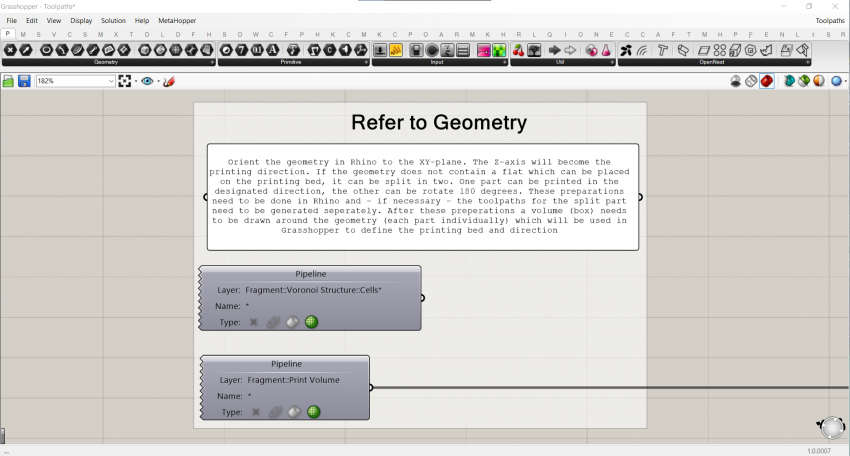Difference between revisions of "2023W4:Online"
(→Data Management) |
|||
| Line 26: | Line 26: | ||
The following tutorials give a brief introduction to certain tools in Rhino and Grasshopper. The tutorials consist of Rhino/Grasshopper files as well as videos. The videos aim to explain the design on a strategic level by visualising it diagrammatically. The grasshopper files show how it can be scripted. This is done by creating titled groups and subgroups to order the file, with additional textual descriptions. In many of the groups, a visualisation subgroup is added which can be turned on or off. | The following tutorials give a brief introduction to certain tools in Rhino and Grasshopper. The tutorials consist of Rhino/Grasshopper files as well as videos. The videos aim to explain the design on a strategic level by visualising it diagrammatically. The grasshopper files show how it can be scripted. This is done by creating titled groups and subgroups to order the file, with additional textual descriptions. In many of the groups, a visualisation subgroup is added which can be turned on or off. | ||
| + | |||
| + | <br> | ||
=='''Grasshopper Conventions'''== | =='''Grasshopper Conventions'''== | ||
Revision as of 14:22, 1 February 2023
MSc 2 IAP 2023: Rhizome 2.0
TUTORIALS
The following tutorials give a brief introduction to certain tools in Rhino and Grasshopper. The tutorials consist of Rhino/Grasshopper files as well as videos. The videos aim to explain the design on a strategic level by visualising it diagrammatically. The grasshopper files show how it can be scripted. This is done by creating titled groups and subgroups to order the file, with additional textual descriptions. In many of the groups, a visualisation subgroup is added which can be turned on or off.
Grasshopper Conventions
Described here are some drawing conventions used in the Robotic Building Lab for Grasshopper. The aim is to create clear organisational structures and descriptions of how and why a script is developed in a certain way so that it is easy to understand. A template using these conventions is provided here:
File:1.GH Conventions-GH Template.gh
Organisation
The Grasshopper scripts are organised according to specific principles considering the layout.
Every script starts with a title and abstract:
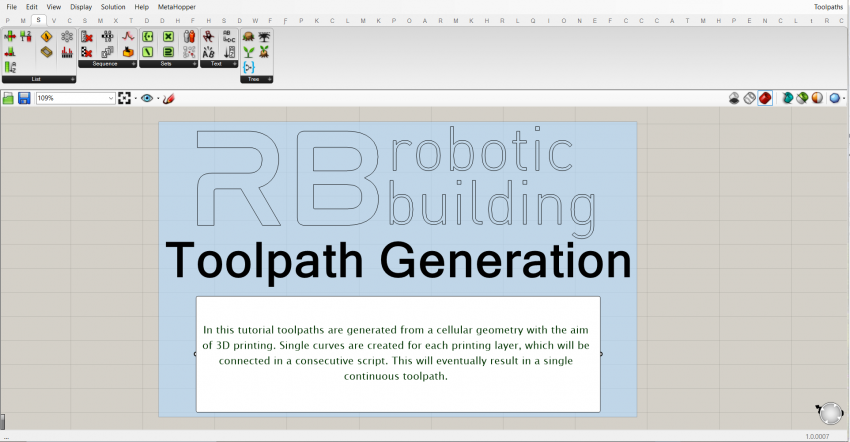
This should be a general description of what the script does and for what purpose. Make sure to save the file while in this view so this is visible when the file is opened.
The components are organised and ordered in groups and subgroups. Every group has at least a title. If required it also contains a textual description in a panel. In general, the groups are coloured white. The smallest groups are titled in the group header, a level above that by a scribble with font size 25, and the main groups with a scribble with font size 50. All the wires which reduce the readability of the script are set to display 'Hidden'.
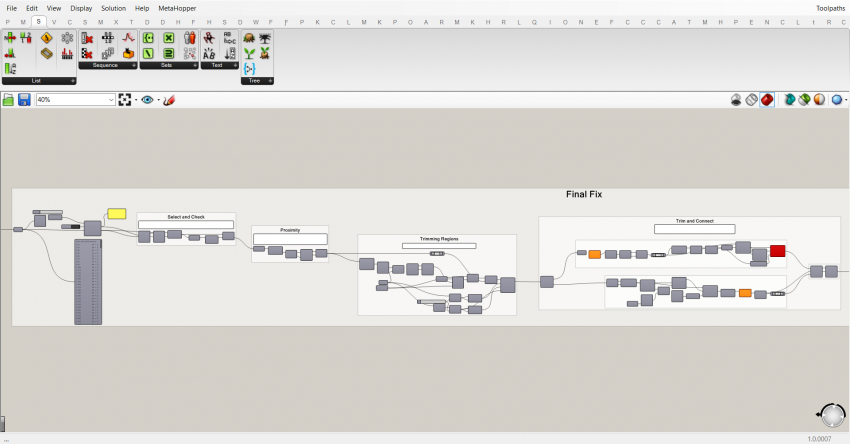
The panels containing the textual descriptions are also white:
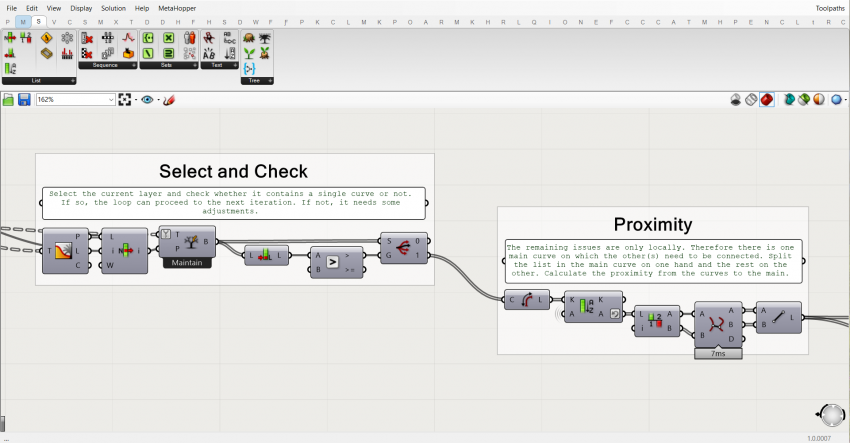
Data Management
Often the script is part of a sequence of scripts, each with a specific task. To create a fluid workflow and be sure the correct data is referred to, certain rules are maintained. Geometry is baked using the baking components of the plug-in Elefront. A layer and a name is assigned, so that the geometry is easy to be referred to in succeeding scripts and it is overwritten each time the component bakes.
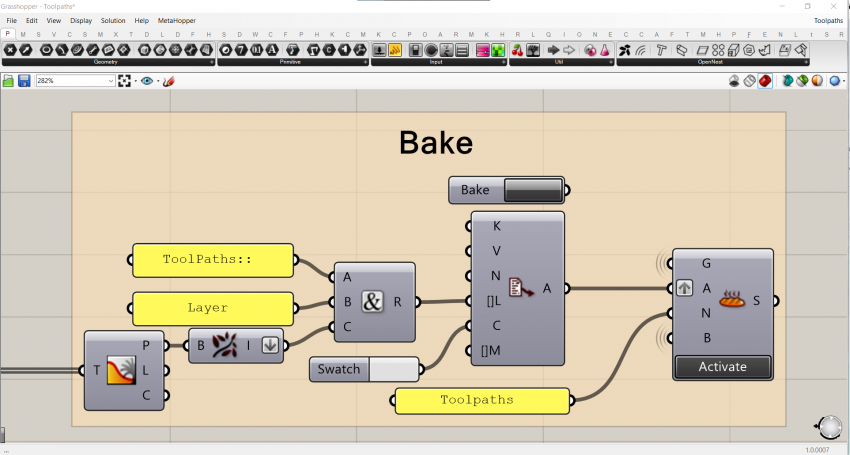
In this way, the geometry can be referred to using the geometry pipeline, and is updated accordingly. Always use the geometry pipeline and the combination between Rhino- and Grasshopper files, since internalizing geometry in a Grasshopper container greatly affects the speed of the script.
